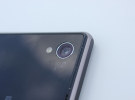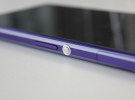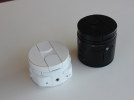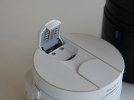Top 10 Banned Apps On BYOD Devices
Bangalore: The BYOD trend that moves office to the coziness of your device is catching up fast. Smartphones and tablets are particularly popular devices of this trend. It may look cool but there are other sides to the trend: companies can place restriction on what you can – and can't – install on your BYOD Smartphone or tablet for security and productivity concerns. Read on to know top 10 iOS and Android apps that are banned on BYOD devices, as compiled by ZDNet.
The Common apps on both platforms that are banned
 #1 Dropbox
#1 Dropbox
Dropbox is a file hosting service that offers cloud storage, file synchronization, and client software. It allows users to create a special folder on each of their computers, which Dropbox then synchronizes so that it appears to be the same folder with the same contents regardless of which computer is used to view it. Files placed in this folder also are accessible through a website and mobile phone applications.
 #2 Facebook
#2 Facebook
The Facebook app on iOS and Android helps to keep up with friends in a easy way. You can see what friends are up to; share updates, photos and videos; get notified when friends like and comment on your posts; text, chat and have group conversations; play games and more.
 #3 Angry Birds
#3 Angry Birds
Angry Birds, the popular addictive game by Rovio Entertainment, features challenging physics-based game play and hours of replay value. Each level requires logic, skill, and force to solve.
 #4 Netflix
#4 Netflix
Netflix is on-demand Internet streaming media which is available as a app for both the platforms. You can watch TV episodes and movies on your Smartphone or tablet. The app helps you for smoot browsing between vedios and good user interface.
 #5 Sugarsync
#5 Sugarsync
SugarSync is a cloud service that enables active synchronization of files across computers and other devices for file backup, access, syncing and sharing from a variety of operating systems, such as Windows, Mac OS X, iOS, Android and others. The program automatically refreshes its sync by constantly monitoring changes to files—additions, deletions, edits—and syncs these changes with any other linked devices as well as the SugarSync servers.
Apps specific to Android platform
 #1 Google+
#1 Google+
Google+, is the second-largest social networking site in the world, having surpassed Twitter in January 2013. With Google+ Android app you can enjoy magazine style layout in the tablet version; automatically share photos to an Event with Party Mode; turn on Auto Backup to save full resolution photos and videos privately on Google+; check out the What’s Hot stream to see trending topics; view the Nearby stream to see what people near your location are saying.
 #2 Google+ Hangouts
#2 Google+ Hangouts
Google+ Hangouts is an instant messaging and video chat app for Android. It has three messaging products that Google had implemented concurrently within its services, including Talk, Google+ Messenger, and Hangouts, a video chat system present within Google+.
 #3 Google Play Movies & TV
#3 Google Play Movies & TV
Google Play Movies & TV allows you to watch movies and TV shows purchased on Google Play.
You can stream instantly on your Android phone or tablet, or download so you can watch from anywhere, even when you’re not connected. Also, get quick access to your personal video collection, including those taken on your phone or tablet.
 #4 Google Play Books
#4 Google Play Books
With this app you can choose from millions of titles on Google Play including new releases, New York Times best sellers, up-and-coming authors, and free books. You can personalize your reading experience, pick up where you left off on your phone, tablet, or computer.
 #5 Google Play Music
#5 Google Play Music
Google Play Music makes it easy to discover, play and share the music you love on Android and the web. You can play millions of songs on Google Play, listen to radio with no limits, and enjoy playlists handcrafted by music experts. You can also add up to 20,000 of your own songs from your personal music collections; access your music anywhere without syncing, and save your favorites for offline playback; experience music without ads and other services.
Apps specific to iOS
 #1 BoxNet
#1 BoxNet
BoxNet is an online file sharing and Cloud content management service for enterprise companies. The company has adopted a freemium business model, and provides up to 10 GB of free storage for personal accounts. A mobile version of the service is available for Android, BlackBerry, iOS, WebOS, and Windows Phone devices.
 #2 Google Drive
#2 Google Drive
Google Drive is a file storage and synchronization service provided by Google, which enables user cloud storage, file sharing and collaborative editing. It is now the home of Google Docs, a suite of productivity applications that offer collaborative editing on documents, spreadsheets, presentations, and more.
 #3 Pandora
#3 Pandora
Pandora app is free personalized radio that only plays music you’ll love. Just start with the name of one of your favorite artists, songs or classical composers and Pandora will create a custom "station" that plays similar music.
 #4 SkyDrive
#4 SkyDrive
SkyDrive is a file hosting service that allows users to upload and sync files to cloud storage and then access them from a Web browser or their local device. With SkyDrive for iOS, you can now easily access, manage, and share files on the go. You can also upload photos or videos from your iPhone or iPad to SkyDrive.
 #5 HOCCER
#5 HOCCER
HOCCER is an app for fast, easy and secure file transfer and data exchange. You can share pictures, music, contacts, bookmarks, messages and arbitrary files with simple gestures like dragging or throw n' catch to nearby recipients. No setup, no user accounts are required.























 Realistically terrifying (Image: Courtesy of Warner Bros Pictures)
Realistically terrifying (Image: Courtesy of Warner Bros Pictures)
